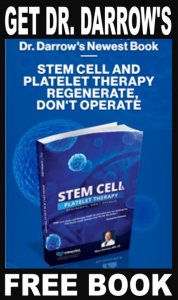
Marc Darrow MD,JD
In his 2011 paper published in the International journal of general medicine, (1) Christian Schneider, MD, Ph.D., explains Traumeel injections as an alternative to Non-Steroidal Anti-Inflammatory Medicines. He describes the treatment in this way.
“Traumeel is a fixed combination of diluted plant and mineral extracts. It has been available over the counter in Germany for over 60 years and in Austria for over 40 years, and is currently available in approximately 50 countries, including the USA. The combination is currently used to treat acute musculoskeletal injuries, such as sprains and traumatic injuries, and as supportive therapy in pain and inflammation of the musculoskeletal system. It can be used in the form of tablets, drops, injection solution, ointment, and gel.
The ingredients of Traumeel have been used for many years for therapeutic purposes, such as for pain (Atropa belladonna), inflammation (Echinacea), bruising (Arnica montana), wound healing (Matricaria recutita, Calendula officinalis), bleeding (Achillea millefolium), edema (Mercurius solubilis), and infections (Hepar sulfuris). Based on such observations, Traumeel was developed by the German physician, Dr Hans-Heinrich Reckeweg in the 1930s; he combined botanical and mineral substances to produce this natural medicine to treat musculoskeletal injuries and inflammation.”
As described on the website drugs.com, “Traumeel® Injection Solution is an anti-inflammatory, analgesic, anti-edematous, anti-exudative combination formulation of 12 botanical ingredients, 1 mineral substance and 1 animal derived substance. Traumeel® Injection Solution is officially classified as a homeopathic combination drug.”
The purpose of Traumeel injections is to be an alternative to Non-Steroidal Anti-Inflammatory Medications and Cortisone
The goal of Traumeel is to act as an anti-inflammatory and be a safe alternative to NSAIDs and Cortisone
A study published in 2017 in the European Journal of Integrative Medicine (2) showed that Traumeel injections could be beneficial in pain and inflammation reduction in patients with knee osteoarthritis who fail to respond to standard-of-care pain treatments, (anti-inflammatories and cortisone) who are at risk due to the side-effects these medications cause. However, further research is needed to determine if Traumeel injections can slow and/or prevent progression of knee osteoarthritis.
1 Schneider C. Traumeel – an emerging option to nonsteroidal anti-inflammatory drugs in the management of acute musculoskeletal injuries. International Journal of General Medicine. 2011;4:225-234. doi:10.2147/IJGM.S16709.
2 Lozada CJ, del Rio E, Reitberg DP, Smith RA, Kahn CB, Moskowitz RW. A double-blind, randomized, saline-controlled study of the efficacy and safety of co-administered intra-articular injections of Tr14 and Ze14 for treatment of painful osteoarthritis of the knee: The MOZArT trial. European Journal of Integrative Medicine. 2017 Aug 1;13:54-63.
Do you have questions? Ask Dr. Darrow

A leading provider of stem cell therapy, platelet rich plasma and prolotherapy
11645 WILSHIRE BOULEVARD SUITE 120, LOS ANGELES, CA 90025
PHONE: (800) 300-9300 or 310-231-7000
Stem cell and PRP injections for musculoskeletal conditions are not FDA approved. We do not treat disease. We do not offer IV treatments. There are no guarantees that this treatment will help you. Prior to our treatment, seek advice from your medical physician. Neither Dr. Darrow, nor any associate, offer medical advice from this transmission. This information is offered for educational purposes only. The transmission of this information does not create a physician-patient relationship between you and Dr. Darrow or any associate. We do not guarantee the accuracy, completeness, usefulness or adequacy of any resource, information, product, or process available from this transmission. We cannot be responsible for the receipt of your email since spam filters and servers often block their receipt. If you have a medical issue, please call our office. If you have a medical emergency, please call 911.
References:
1 Garcia JB, Rodrigues DP, Leite DR, do Nascimento Câmara S, da Silva Martins K, de Moraes ÉB. Clinical evaluation of the post-laminectomy syndrome in public hospitals in the city of São Luís, Brazil. BMC research notes. 2015 Dec;8(1):1-7.
2 Bailey JC, Kurklinsky S, Sletten CD, Osborne MD. The effectiveness of an intensive interdisciplinary pain rehabilitation program in the treatment of post-laminectomy syndrome in patients who have failed spinal cord stimulation. Pain medicine. 2018 Feb 1;19(2):385-92.

